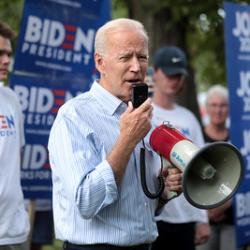The always reliable Jonathan Chait has a new book, provocatively titled The Big Con: The True Story of How Washington Got Hoodwinked and Hijacked by Crackpot Economics. His focus is on supply-side economics, and how it went from a fringe crackpot theory to the dominant mode of thinking on the American right. Of course, the theory never ceased to be a crackpot theory, and the elder Bush’s castigation of “voodoo economics” holds true today as much as yesterday. What happened was that the core interest group in the Republican party– the monied interests, the corporate donors, the rich– favored tax cuts. But the party could not very well advertize tax cuts for the rich because Enron would gain, or because Steve Forbes would dramatically increase his wealth. No, they needed a theory claiming that everybody would benefit.
Before getting to the theory itself, we should pause for a second and consider what really drives the Republican party. As Kevin Drum’s review of Chait’s book notes succinctly, it’s not the “neocons” or the “theocons”, but the “moneycons”. Just follow the money. After the 2004 election, Bush abruptly stopped talking about abortion and gay marriage and started talking about privatizing social security and making his tax cuts permanent. David Kuo, the former second-in-command at the White House Faith-Based Office, has said that the faith-based initiatives were there to serve a political end, and that Rove’s office viewed them as “nuts”. Tucker Carlson also confirmed this last year, appealing to his personal knowledge, declaring that the “deep truth is that the elites in the Republican Party have pure contempt for the evangelicals who put their party in power.” Keep following the money…
So what is supply side economics? It is basically the notion that tax cuts are a panacea for all the evils in the world. If I exaggerate, it is slight. One of the architects, Jude Wanniski, once explained the belligerence of nazi Germany from the fact that Hitler insisted on keeping taxes high. The idea germinated in the mind of Arthur Laffer, and it is underpinned by a trivial observation: incentives matter. If the tax rate is zero, your revenue will be zero. If you set the marginal tax rate at 100 percent, you can be sure be observe a large diminution in effort, with knock-on effects for revenue. Hence, Laffer claimed, by cutting taxes, you actually increase revenue because of positive incentive effects. Growth will be higher, inflation will be lower, and the coffers will be overflowing. The economy will be swimming in so much bounty that nobody will even notice that the rich are making out like bandits.
Of course, as Chait notes, this idea is ludicrous. For a start, how can you be certain that you are on the downward sloping part of the Laffer curve, assuming this portion even exists? You can’t. No reputable economist ever bought this idea. Laffer remained an isolated figure and his acolytes who sold the theory had no economics training whatsoever. Note that it is a perfectly reputable argument to claim that incentives matter for growth and that cutting taxes can add to the growth rate at the margin. The crackpot element comes in when somebody argues that this effect is so great, so enormously powerful, that it reverses the revenue loss from the tax cut.
Of course, this hypothesis should be easy to verify, and unfortunately for the supply-siders, history is not on their side. As Chait notes, the top marginal tax rate from 1947-64 was 91 percent, and 70 percent from 1964-73. Yet during this entire period, the economy grew at an impressive 4 percent a year, and the benefits of growth were shared widely. The boom took place in spite of the high taxes. As we all know, Reagan lowered the top marginal rate dramatically, and it reached 28 percent in 1986. In 1991, Bush raised the top marginal rate to 31 percent. Despite this marginal increase, relative to what came before, the supply-siders screamed bloody murder. The economy was on the verge of tanking, they cried. And yet nothing happened. Instead, on the back of Bush’s tax increase and Clinton’s balanced-budget measures, the economy rose precipitously throughout the 1990s, and everybody gained. The world did not end.
The supply-side industry was undaunted by facts. But one of the traits of the modern pseudo-conservative movement is that ideology matters more than evidence. In a sense, they have embraced the most cynical form of postmodernism in that they believe they can mold facts to conform to a pre-existing ideology. As many have noted, there is an almost complete disregard for policy analysis in the current regime. It is ideology above all. With this in mind, it is no real surprise that the first politician Laffer converted to the cause (using his infamous napkin) was Dick Cheney.
But still, the Republican party at the time was cautious and sober. It believed in things like balanced budgets and fiscal prudence. The transformation was complete when Bob Dole, one of the last remaining of the old guard, capitulated completely and endorsed the supply side theory in 1996. And now, the theory is treated as basic truth. Nobody raises an eyebrow when Bush the younger touts tax cuts as the answer to everything and says things like “the deficit would have been bigger without the tax-relief package”.
Let’s address the Bush tax cuts for a second. The consensus is that they stimulated the economy during the downturn of 2001 as private investment collapsed. The manner was typically Keynesian, as consumers responded positively to a higher disposable income. Even here, many economists dispute the “bang for buck” effect as most of the tax cuts were directly toward the rich who tended to consume a smaller percentage of their income. Also, as we are now coming to grips with, a flush of global liquidity and lax regulations contributed to an housing price bubble that (more than any tax cuts) kept the economy afloat (for a while, at least). But I don’t want to digress. Nobody really believes the growth in the past few years came from incentive effects on the supply side. Nobody seriously believes that the deficit would have been higher without the tax cuts (many confuse base and policy effects here). That is not to say the tax cuts were a bad idea at the time; it’s just that their efficacy had nothing to do with the supply-side ideology.
It’s all about spin. As Chait notes, the Bush tax cuts were not even sold on supply-side grounds. First it was returning the surplus to the people, then it was fighting a recession, then fairness. They played down the argument that cutting taxes on the rich would lift all boats and pay for itself. Why? Because it still sounds a little… voodoo. Any excuse will do. The attempt to avoid talking about the subject takes on a strangely Orwellian tone. The estate tax on the ultra-wealthy becomes a tax on death. Senator Jeff Sessions even tried to find somebody who had died in Hurricane Katrina that was suffering from the estate tax. Remember, ideology above all! (he didn’t find anyone, by the way). Similarly, pro-business environmental policies are given innocuous-sounding names like “Healthy Forests” and “Clear Skies.” Medicare legislation written by drug companies designed to send a huge subsidy to drug companies is sold as a boon to the elderly.
This is all clearly in the domain of prudential judgment, which we know concerns the application of Catholic teaching to changing concrete facts and circumstances. In terms of the economy, we need to be guided by notions like solidarity and the preferential option for the poor. This means we must do out best to sift through the evidence, and not be blinded by ideology. For example, many people used to believe that boosting government spending was the best way to fulfill our duty to the poor. Others argued that balancing the budget must come first, as the Clinton boom was the first tide to rise all boats since 1974. These are useful debates. But what we cannot do is simply ignore and twist the facts to favor a chosen ideology, especially when a preferential option for the rich lies behind this ideology. Supporting policies on these terms is a gross abuse of the term “prudential judgment”.
Let me end with the great unspoken word in the debate: inequality. Since the 1970s, the share of income going to the top 1 percent has doubled, while for the top 0.1 percent, it has trplied, and quadrupled for the top 0.01 percent. It seems obvious that the post-tax redistribution toward the rich bears some blame here, as does the continuous process of de-unionization, shifting bargaining power away from workers. Rising inequality is something we need to address, but the frame of the current debate is such that it is completely frozen out. I’ll leave the last word with Chait: “The conservatives of today … have redefined conservatism as an expression of their material self-interest, defined in the narrowest and most short-sighted terms.” Indeed.












